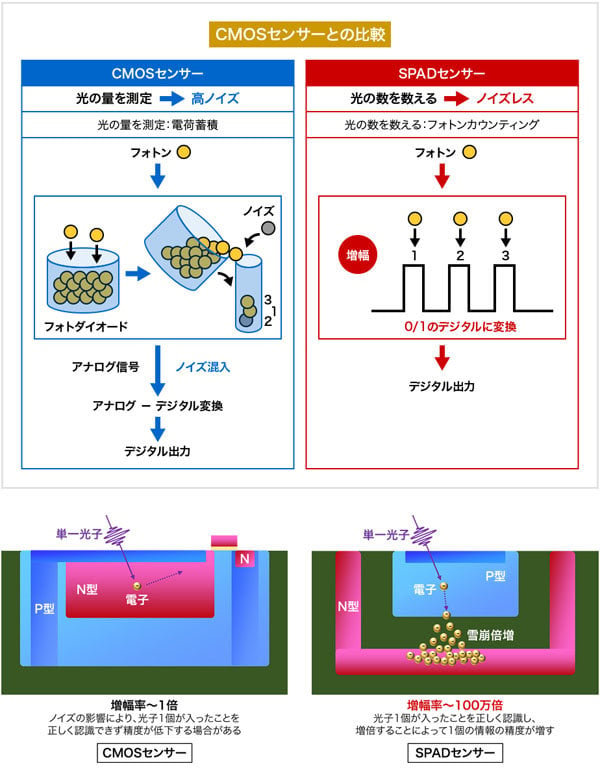Canon Develops Sensor that Can Shoot Full Color Photos in the Dark
![]()
Canon has developed an image sensor that is capable of capturing high-quality color photography even in the dark. The company says that it will be able to shoot clear photos even in situations where nothing is visible to the naked eye.
In a report from Nikkei, Canon says that it has developed a new type of light-receiving element called a single photon avalanche diode (SPAD) and is implementing it on a CMOS sensor. SPAD photodetector technology on its own isn’t new, and has been in use since the 1970s. However, Canon has managed to create a sensor with 3.2 million pixels, which it says is more than three times the resolution of conventional SPADs and makes it the highest-resolution sensor of its type ever made.
The sensor is designed to replace, or at least provide an alternative to, infrared night vision cameras. Infrared is useful for recognizing shapes and providing sight in the dark, but is not capable of recognizing colors. On the flipside, cameras that can see color in the dark only do so by leveraging high ISOs, which can work to a certain point but eventually lead to extremely noisy images in levels of extreme darkness.

Nikkei adds that the SPAD sensor has an additional feature that allows it to measure the distance to an object from the time it takes for the reflected light to return to it, meaning it can understand space in three dimensions. As a result, it is possible that this sensor could be used on devices that currently leverage LiDAR.
Canon intends to launch the new sensor in security cameras first by 2023 and will begin mass production in 2022. According to Nikkei, Canon intends to use much of its existing CMOS image sensor manufacturing equipment to make the SPAD sensors which will save them time and money over having to build new factories or ship in new equipment. While there is currently a large amount of demand for sensors in the smartphone market, Canon and others are preparing for an uptick in demand in the autonomous sector in the coming years, namely for vehicles and robotics. 3D-capable sensors like the SPAD here will become more valuable, as the market is expected to be worth $15 billion by 2025.
Image credits: Header photo licensed via Depositphotos.